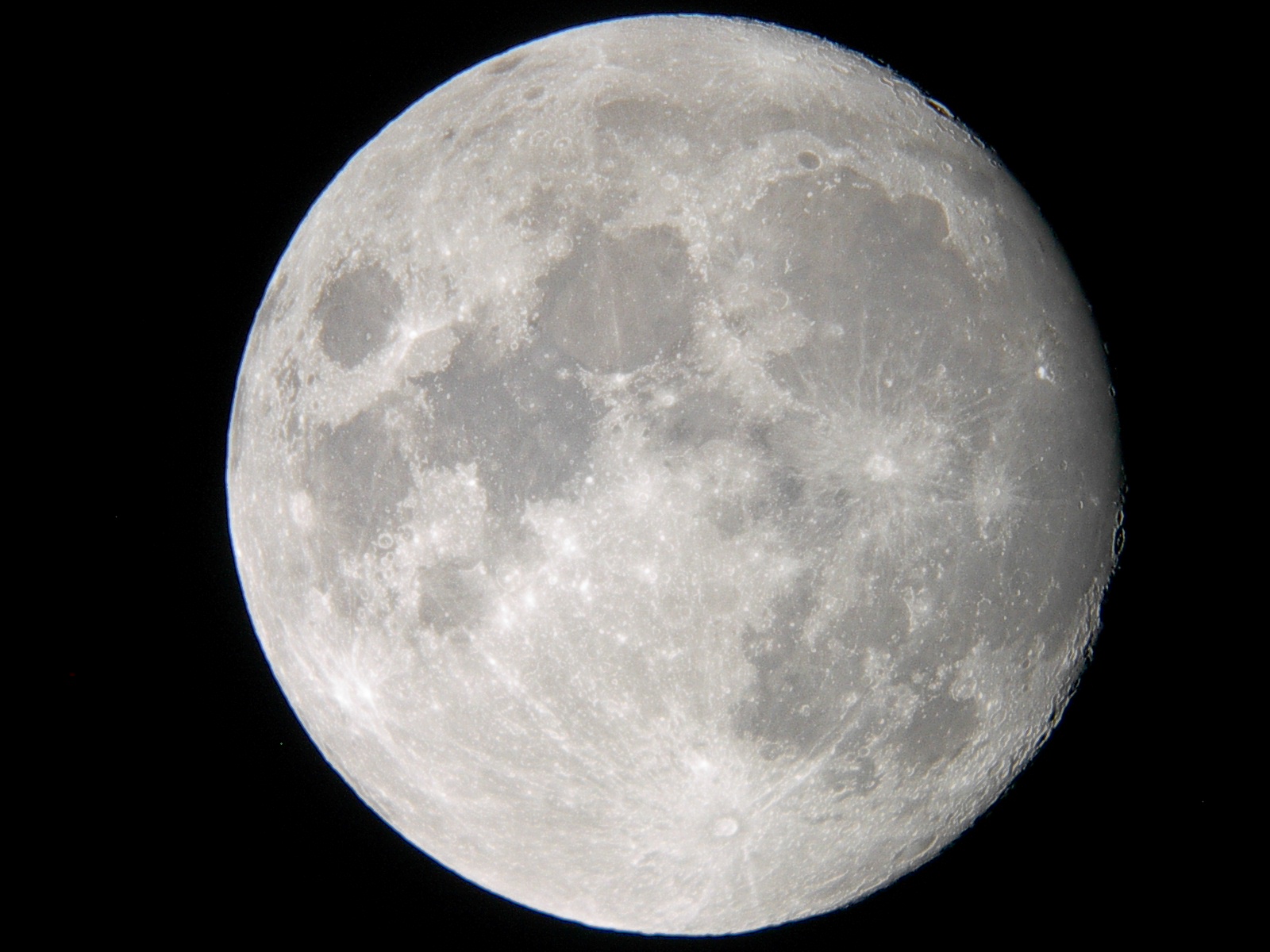
Facts about the Moon:
- The Moon is also called the Luna
- It is the Earth's only natural satellite, formed 4.6 billion years ago around 30-50 million years after the formation of the solar system.
- It is in synchronous rotation with Earth - the same side is always facing Earth
- The first unmanned mission to the moon occurred in 1959 by the Soviet Lunar Program, the first manned landing was Apollo 11 in 1969
- Its average distance from Earth is 384, 400 km, its length of orbit 27.3 Earth days and its surface temperature is -233 to 123 Celsius.
- The dark side of the moon is a myth - in reality, both sides of the Moon see the same amount of Sun, however, only one side of the Moon is ever seen from Earth because the Moon rotates around its own axis at the same time it takes to orbit the Earth - the same side is always facing Earth. So the side we see is always lit up by reflected sunlight, and the side that faces away from Earth lies in darkness and can only be seen by the human eye from a spacecraft.
- The rise and fall of tides on Earth is caused by the Moon - this is due to the gravitational pull the Moon exerts, one is on the one side that which faces the Moon and the other one is on the opposite side which then faces away from the Moon - these are known as two bulges in the Earth which move around the oceans as the Earth rotates which causes high and low tides around the globe.
- The Moon is drifting away from the Earth - it will continue to do so for around 50 billion years and by the time that happens, the Moon will take around 47 days to orbit the Earth instead of 27.3 days
- A person weights much less on the Moon - it has a weaker gravity due to its smaller mass
- The Moon has only be waked on by 12 people and they have all been American males - now, only unmanned vehicles visit the Moon
- The Moon has no atmosphere - its surface is unprotected from cosmic rays, meteorites and solar winds and has huge temperature variations. No sound can be heard on the Moon, and the sky always appears black
- The Moon has quakes, caused by the gravitational pull of the Earth. They are called moonquakes (surprisingly enough)
- Scientists think the Moon has a molten core like Earth
- The first spacecraft that ever reached the Moon was Luna 1 in 1959, launched from the USSR, which passed within 5995 km of the surface of the Moon
- The Moon is the fifth largest natural satellite in the Solar System.
- There is a theory that the Moon was once part of the Earth and was formed from a chunk that broke away due to a huge object colliding with Earth when it was young
- The Moon will be visited by man (hopefully, including WOman in the future) as a permanent space station will be set up in 2019
- During the 1950s, USA considered detonating a nuclear bomb on the Moon, a secret project known as 'A Study of Lunar Research Flights', which was proposed to be a show of strength during the space race with the USSR.
- There are four kinds of lunar months: anomalistic, nodical, sidereal and synodical
- We see slightly more than half of the Moon from Earth as it rocks in the east and west direction which allows us to see farther around in longitude at each edge
- It would take hundreds of thousands of moons to equal to brightness of the sun
- The Earth, when seen from the moon, also goes through phases, however, they are opposite to the lunar phases, so its full Earth when its new moon for us, last-quarter Earth when its first-quarter moon, crescent Earth then we see gibbous moon, and so on. Also, eclipses are reversed when viewing the moon
- The moon has its own time zone - Franklin developed a system he called 'lunar mean solar time' or Lunar Time.
Moon phases

What is the Moon made of?
Its surface shows plenty of evidence of asteroids, and also consists of overlapping craters and craters on top of lava flows. The crust of the moon is made up of concrete-like regolith. Its crust is about 38 to 63 miles thick. Like the Earth, the moon consists of a crust, mantle and core. Deep insides its interior, the moon has a solid iron core surrounded by a molten liquid iron outer core. Most of the interior of the moon is made up of the lithosphere, and as this region melted early in the moon's life, it supplied the magma necessary to create lava plains on the surface. Over time, the magma cooled and solidified, ended volcanism on the moon. The moon has the second-densest body in the solar system, beaten by Jupiter's moon, Io.
Thanks for reading!
No comments:
Post a Comment